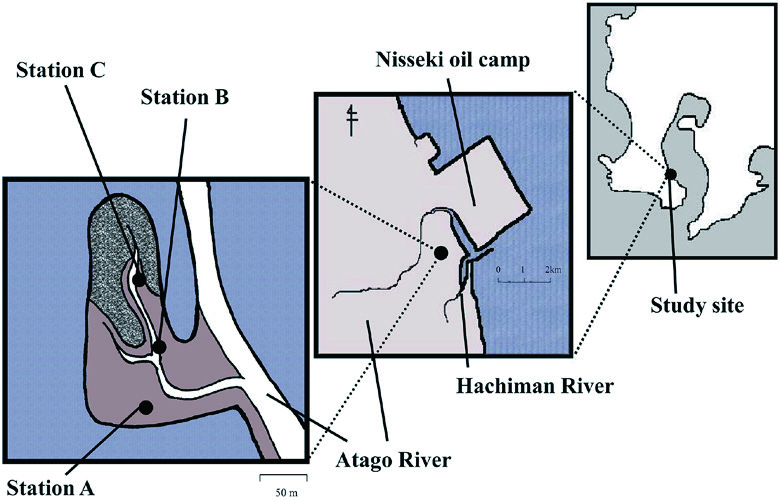Abstract / Introduction / Summary:

Cerithidea rhizophorarum is a dioecious snail that belongs to the family Potamididae and is distributed in various parts of the western Pacific Ocean from the Tohoku region to the south of Japan. Generally, C. rhi- zophorarum inhabits the tidal flat mud of reed beds and mangrove forests. A mangrove forest consisting especially of Kandelia obovata and Hibiscus hamabo spreads out on the estuary tidal flat of the Atago River that flows through Kiirecho (currently part of Kagoshi- ma City). In the present study, we investigated the life history, reproduc tive behavior, and tree climbing be- havior of C. rhizophorarum in this zone. Firstly, three survey stations were set on the estuary tidal flat, 60 m away from and orthogonal to the shoreline. The snails were randomly collected every month at each station, and the number and size of the appearing individuals were recorded. From the results, it was found that there was no introduction of new individuals. Second- ly, mating behavior was observed in July and August 2002. The observation of mating behavior was con- ducted as follows: patrolling the surveying the area ev- ery 15 minutes; setting a flag mark nearby and record- ing the time as a stating time when a mating pair was found; and recording the time as an end time, when the separation of the pair is observed. The frequency of mating peaked about one to two and a half hours be- fore the lowest tide in the daytime. At night, the fre- quency was relatively high in the two hours before and after the lowest tide. Almost no mating pair was ob- served when it was raining. Moreover, the observation of the tree climbing behavior was carried out in an area of 100 m2 where the species K. obovate was dom- inant. The number of C. rhizophorarum attached to K. obovata in the area was recorded and compared with the fluctuation of the number of individuals on the ground surface. In addition, we recorded hourly popu- lation fluctuations to investigate what kind of diurnal activity this species has in summer and winter. As a re- sult, the number of C. rhizophorarum on the tidal flats was important from early spring to summer, while the diurnal activities were hardly seen in the winter in this area. Also, the diurnal activities on climbing trees were more active in the summer.
